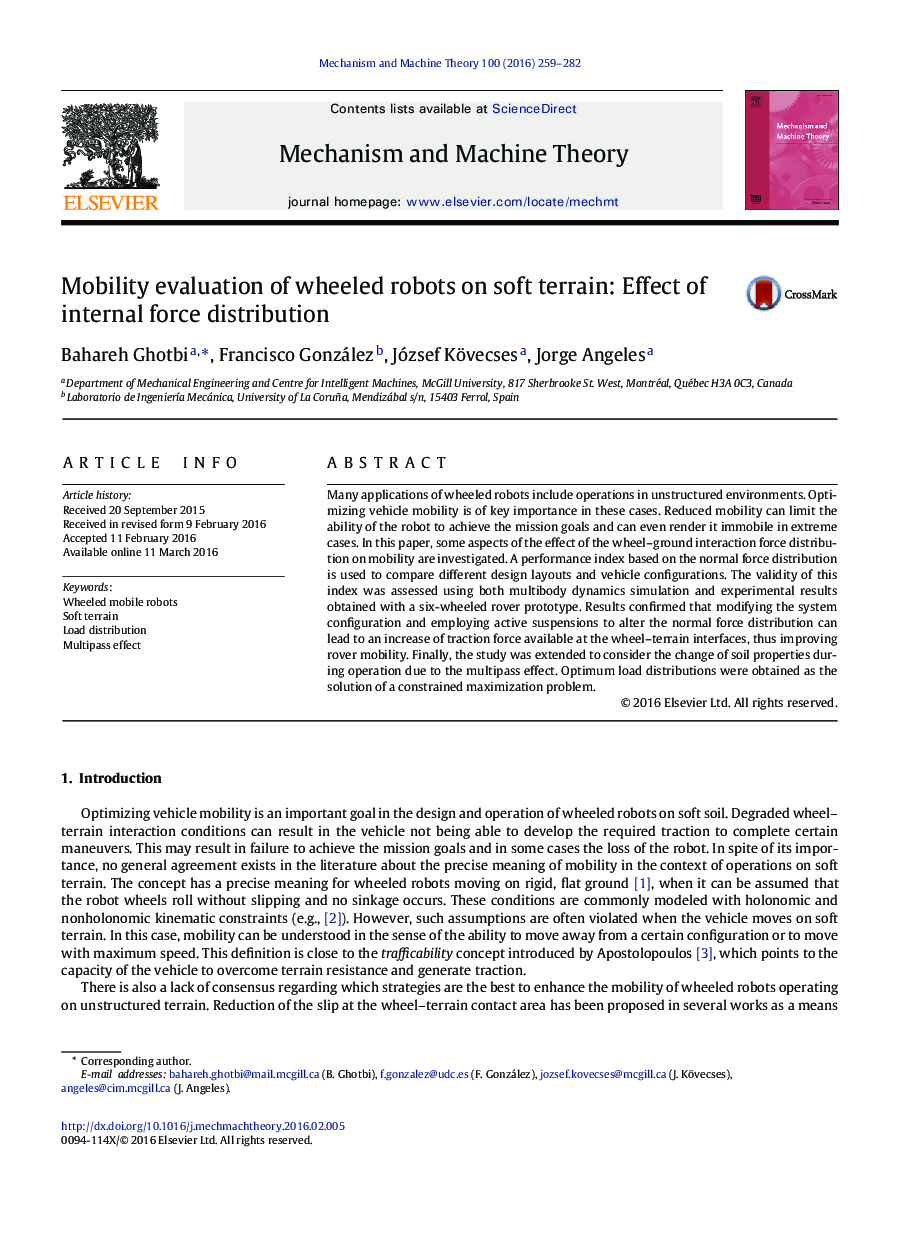| Article ID | Journal | Published Year | Pages | File Type |
|---|---|---|---|---|
| 802997 | Mechanism and Machine Theory | 2016 | 24 Pages |
•Mobility of wheeled robots depends on the traction force that they can develop.•Traction is related to the normal force dispersion among the wheels.•Experiments and simulations showed that reduced load dispersions improve mobility.•Optimal force distributions were determined considering multipass effect.
Many applications of wheeled robots include operations in unstructured environments. Optimizing vehicle mobility is of key importance in these cases. Reduced mobility can limit the ability of the robot to achieve the mission goals and can even render it immobile in extreme cases. In this paper, some aspects of the effect of the wheel–ground interaction force distribution on mobility are investigated. A performance index based on the normal force distribution is used to compare different design layouts and vehicle configurations. The validity of this index was assessed using both multibody dynamics simulation and experimental results obtained with a six-wheeled rover prototype. Results confirmed that modifying the system configuration and employing active suspensions to alter the normal force distribution can lead to an increase of traction force available at the wheel–terrain interfaces, thus improving rover mobility. Finally, the study was extended to consider the change of soil properties during operation due to the multipass effect. Optimum load distributions were obtained as the solution of a constrained maximization problem.
